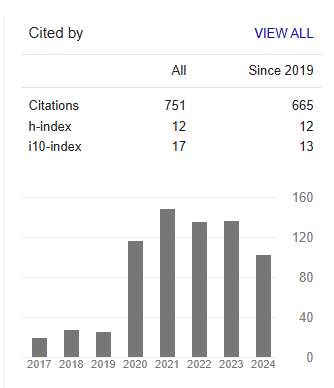Prevalance of Extended Spectrum Beta Lactamases (ESBL) Producing Escherichia Coli Isolated From Clinical Samples at Tertiary Care Hospital Peshawar
Abstract
Raiz Muhammad, Abdul Latif And Mubeen Khan
Escherichia coli is Gram negative, facultative and non sporulating rod shaped bacteria. It is commonly inhabitant of the gastrointestinal tract of humans and animals. E. coli cause diseases like urinary tract infection cholecystitis, cholangitis and traveler’s diarrhoea and the UTI which is more prevalent worldwide. E. coli cause complication like Hemolytic Uremic Syndrome which leads to renal failure, Thrombotic Thrombocytopenic Purpura, septicemia and peritonitis. Extend spectrum beta lactamase enzyme produce by E. coli which capable of hydrolyzing first and third generation cephalosporin, and is inhibited by beta lactamase inhibitor. A total of 150 clinical samples (blood, urine, wound swab, body fluids) were collected from Post Graduate Lady Reading Hospital Peshawar. Different media used were Nutrient agar, MacConky agar and Cysteine, Lactose and Electrolyte-Deficient agar. E. coligive pink colonies on MacConky agar because it is lactose fermenter. For further confirmation different biochemical tests were performed like triple sugar iron, Indole, and citrate utilization tests. The antibiotics susceptibility and resistivity was checked by disk diffusion method and different antibiotics were used. For ESBL detection combined disk method was performed. In the clinical samples the percentage of Gram positive bacteria in blood was (20%), urine (14.2%), wound swab (83.3%), and body fluids (8%), and the Gram negative in urine was (80%), blood (7%), wound swab (10%), and body fluids (0%). E. coli was more prevalent in urine which was 25(35.71%) and ESBL producing E. coli was 5(20%). The ESBL producing E. coli was resistant to ciprofloxacin (100%), amikacin (40%), amoxicillin+clavulanic acid (40%), levofloxacin (80%), tazobactum+pipracilline (20%), gentamycin (100%), trimethoprim (60%), cefotaxime (100%) and meropenem (0%). Sensitivity toward levofloxacin (20%), tazobactum+pipracilline (80%), gentamycin (0%), trimethoprim (40%), cefotaxime (0%) and meropenem (100%), ciprofloxacin (0%), amikacin (60%), amoxicillin+clavulanic acid (60%). The most effective antibiotic against ESBL producing E. coli was Meropenem while least effective antibiotics against ESBL producing E. coli were Gentamycin and Ciprofloxacin.



